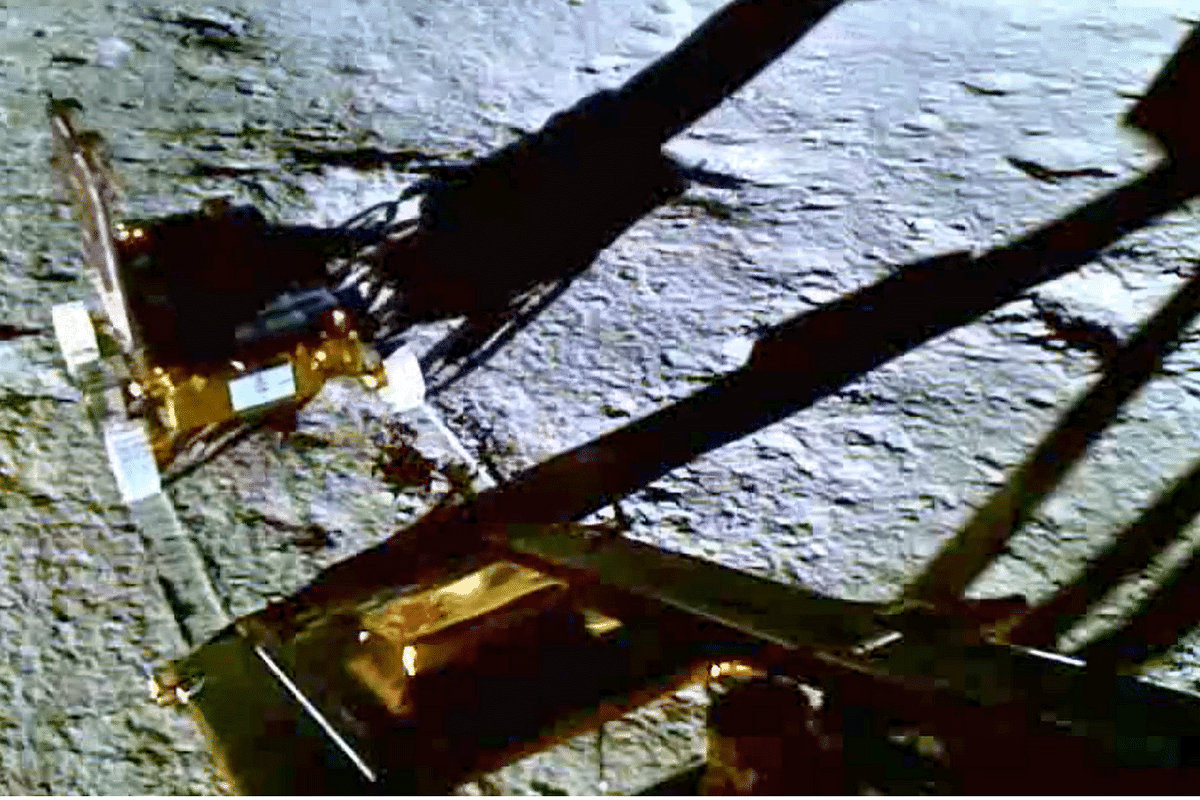Science
Chandrayaan-3: How Pragyan Rover Is Navigating The Tough Lunar Obstacle Course

Screengrab from ISRO's footage of Pragyan rover rolling out on the lunar surface
The surface of the Moon isn't exactly an ice skating rink. The unevenness of terrain is further pronounced in the polar regions.
Currently, in the south pole region, India's Pragyan rover is having to navigate this rough terrain — of course, not without help from the control room back home that is guiding and monitoring the lunar explorer.
In recent good news, the rover reportedly overcame the first major obstacle on its path — a lunar crater that is 100 mm (10 cm) deep.
Speaking to the Times of India, Chandrayaan-3 project director P Veeramuthuvel said, "We were very anxious about the first crater, but that obstacle has been overcome."
Veeramuthuvel explained that the rover operations were not fully autonomous. Pragyan's movements faced numerous challenges that required the involvement of ground teams to overcome them one by one.
For a sense of how rover mobility is executed, every time the rover has to move from one point to another, the data captured by its onboard navigation camera must be downloaded back on Earth for the purpose of generating what's called a "digital elevation model."
Then, a decision is made on the course the rover must take and commands are relayed accordingly.
Still, there are other limitations. For instance, "Every time the rover is commanded to move, it can at best cover five metres ('maximum DEM')," the Chandrayaan-3 project director told The Times of India.
The Indian space agency has successfully executed multiple rover movements so far, despite other limitations such as intermittent telemetry and telecommunications availability, the necessity to continuously track the Sun, and a turnaround time of about five hours between each movement operation, as explained by Veeramuthuvel.
Due to the Sun's rotation of 12 degrees each day, the rover's deployable solar panel must account for this movement. Unlike the lander, which has solar panels on three sides, the rover on side only has half the space available for solar cells.
The rover's data rate is restricted because it can only communicate with the lander, which then needs to transmit the data to the ISRO control room.
This process takes time as scientists analyse the incoming science data from the rover's payloads. Veeramuthuvel expressed confidence in the team's careful planning and the rover's ability to perform well.
Support Swarajya's 50 Ground Reports Project & Sponsor A Story
Every general election Swarajya does a 50 ground reports project.
Aimed only at serious readers and those who appreciate the nuances of political undercurrents, the project provides a sense of India's electoral landscape. As you know, these reports are produced after considerable investment of travel, time and effort on the ground.
This time too we've kicked off the project in style and have covered over 30 constituencies already. If you're someone who appreciates such work and have enjoyed our coverage please consider sponsoring a ground report for just Rs 2999 to Rs 19,999 - it goes a long way in helping us produce more quality reportage.
You can also back this project by becoming a subscriber for as little as Rs 999 - so do click on this links and choose a plan that suits you and back us.
Click below to contribute.
Latest